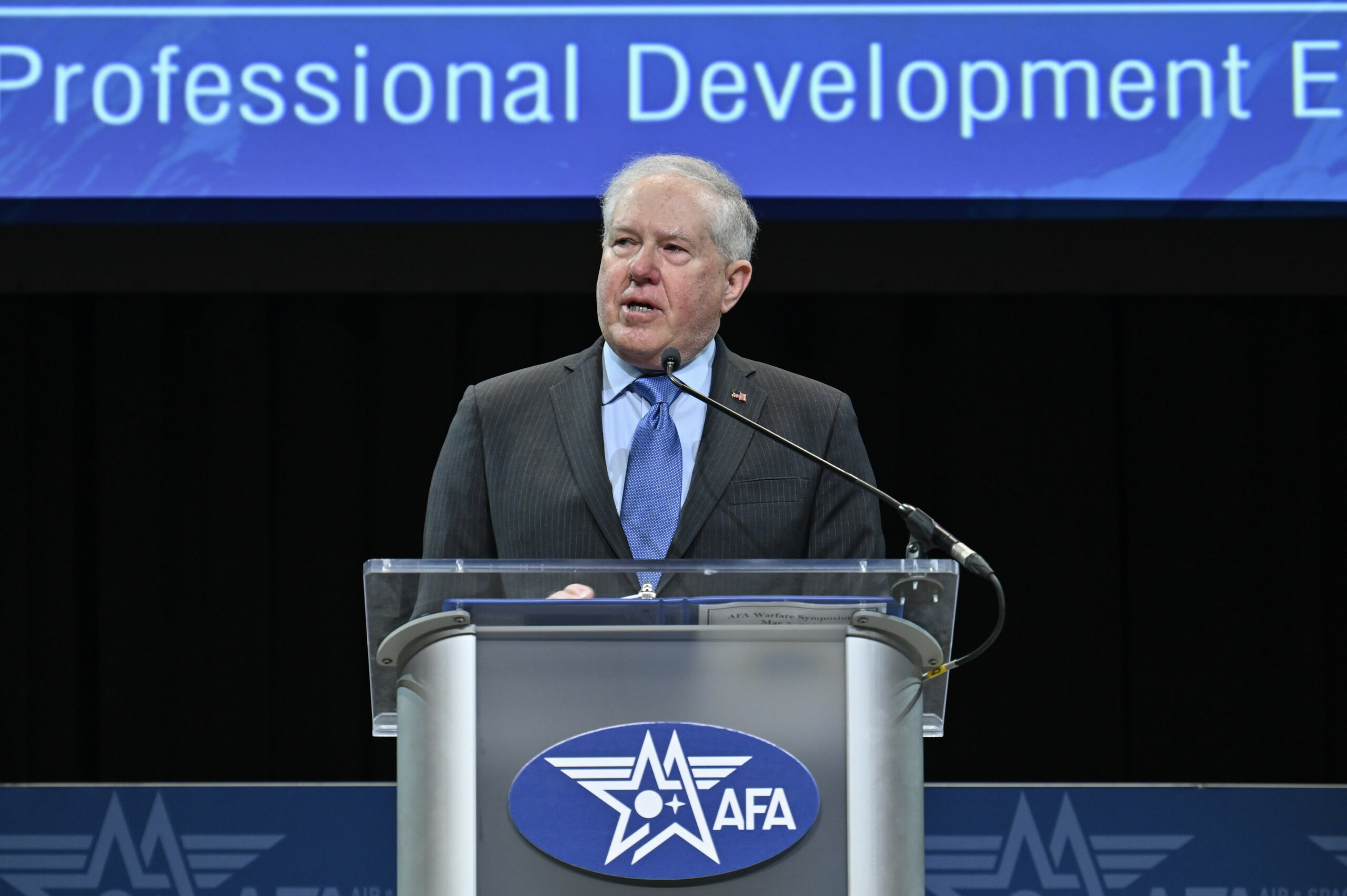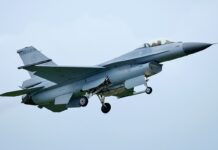The US Air Force (USAF) has no choice but to prioritise future capabilities to keep ahead of China as its pacing threat, even if that means making hard choices in the present, the service’s senior civilian leader has indicated.
“We are united in our commitment to modernising the Air and Space Forces and in achieving the transformation we must have to be competitive with our pacing challenge – China, China, China,” said Secretary of the Air Force Frank Kendall, addressing the 2023 Air and Space Forces Association Warfare Symposium in Aurora, Colorado, on 7 March. “We have no choice but to prioritise the Air and Space Forces we must have to remain dominant in the future.
“The operational risks we have against our pacing challenge are increasing over time. Emphasising the current force over the force of the future is a road to operational failure,” Kendall warned. “The good news is that we are maintaining our current force at adequate levels of readiness. We are also continuing to divest older and less capable or relevant platforms as we increase mid-term capacity by acquiring aircraft currently in production at higher rates than previously planned. In general, our previously initiated programmes are continuing as intended.”
Speaking a week ahead of the USAF releasing its fiscal year 2024 (FY24) budget proposal, Kendall disclosed that the request will include “close to 20 new efforts” and gave details on some of these. One of them is a programme “to create a new missile warning and tracking architecture that addresses the full spectrum of missile threats, including hypersonics” along with moving forward on “efforts to define and fund the next generation of integrated command, control, communications and battle management needed by both the Air and Space Force”, said Kendall.
The USAF budget request will also include funding requests for the Next Generation Air Dominance (NGAD) sixth-generation fighter and the introduction of uncrewed Collaborative Combat Aircraft (CCAs) to provide affordable mass, said Kendall. Explaining the latter, he said these will number about 1,000 and “will complement and enhance the performance of our crewed fighter force structure. They will not impact planned crewed fighter inventory. One way to think of CCAs is as remotely controlled versions of the targeting pods, electronic warfare pods, or weapons now carried under the wings of our crewed aircraft.”
Kendall said the FY24 budget request would also focus on “hardening our forward bases and with the support structure needed for Agile Combat Employment, without having to wait for a development program”. He said that with timely investments “we can substantially improve our forward tactical air resilience”, adding that “This effort has strong synergy with our integrated deterrence strategy, in both the western Pacific and in Europe.”

Confirming the FY24 budget request will include funds to further develop the USAF’s B-21 Raider, the new long-range strike bomber being developed by Northrop Grumman, Kendall noted that “Our goal is to get it into production as quickly as possible, with acceptable concurrency risk.”
Lastly, Kendall outlined one particular future requirement being driven by the need to confront China in the vast Indo-Pacific region. “Of particular concern is the survivability of our tankers, which have to be far enough forward to refuel fighters close enough to the threat that they can operate effectively,” he said. “Our preliminary assessment is that this will mandate a more survivable tanker that is not a derivative of a commercial aircraft. As a result, we have begun the effort to define the concept for this new capability, which will be competitively procured. One possibility is a blended wing body design. We intend to conduct an analysis of alternatives for this new platform, named Next Generation Aerial Support System (NGAS), in 2024.”
This new initiative effectively kills the USAF’s KC-Y ‘bridge tanker’ effort to competitively procure 150 tankers as a bridge from the current KC-46 Pegasus to the air force’s KC-Z next-generation tanker, while the KC-Z effort is itself replaced by the NGAS programme. Instead, according to USAF acquisition executives, 75 more tankers will be procured under a recapitalisation of the air force’s KC-135 tanker fleet, while NGAS is due to come online about a decade from now.
Since March 2022 the USAF has been working according to seven operational imperatives to focus its strategy and modernisation efforts:
- Defining a resilient and effective Space Force order of battle and architectures;
- Achieving operationally optimised advanced battle management systems (ABMS)/Air Force Joint All-Domain Command & Control (AF JADC2);
- Defining the Next Generation Air Dominance (NGAD) system of systems;
- Achieving moving-target engagement at scale in a challenging operational environment;
- Defining optimised resilient basing, sustainment, and communications in a contested environment;
- Defining the B-21 Long Range Strike family of systems;
- Achieving the readiness of the Department of the Air Force to transition to a wartime posture against a peer competitor.
Peter Felstead











